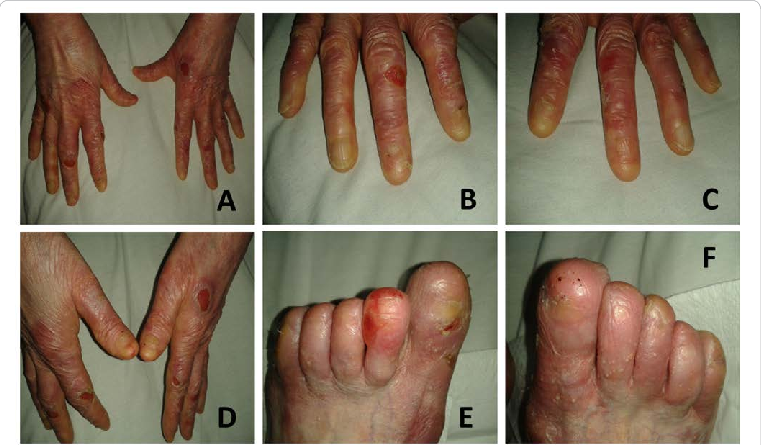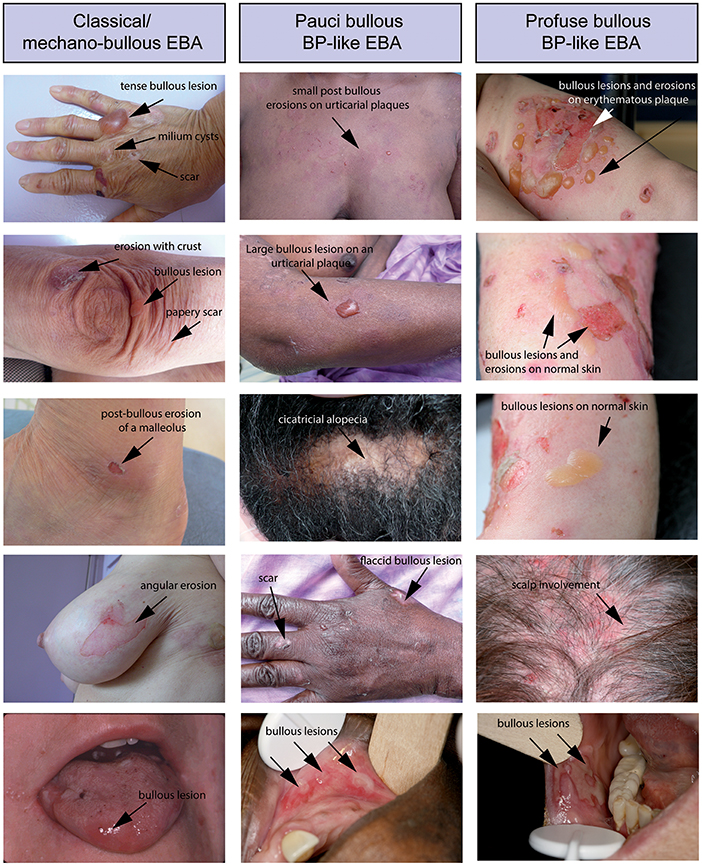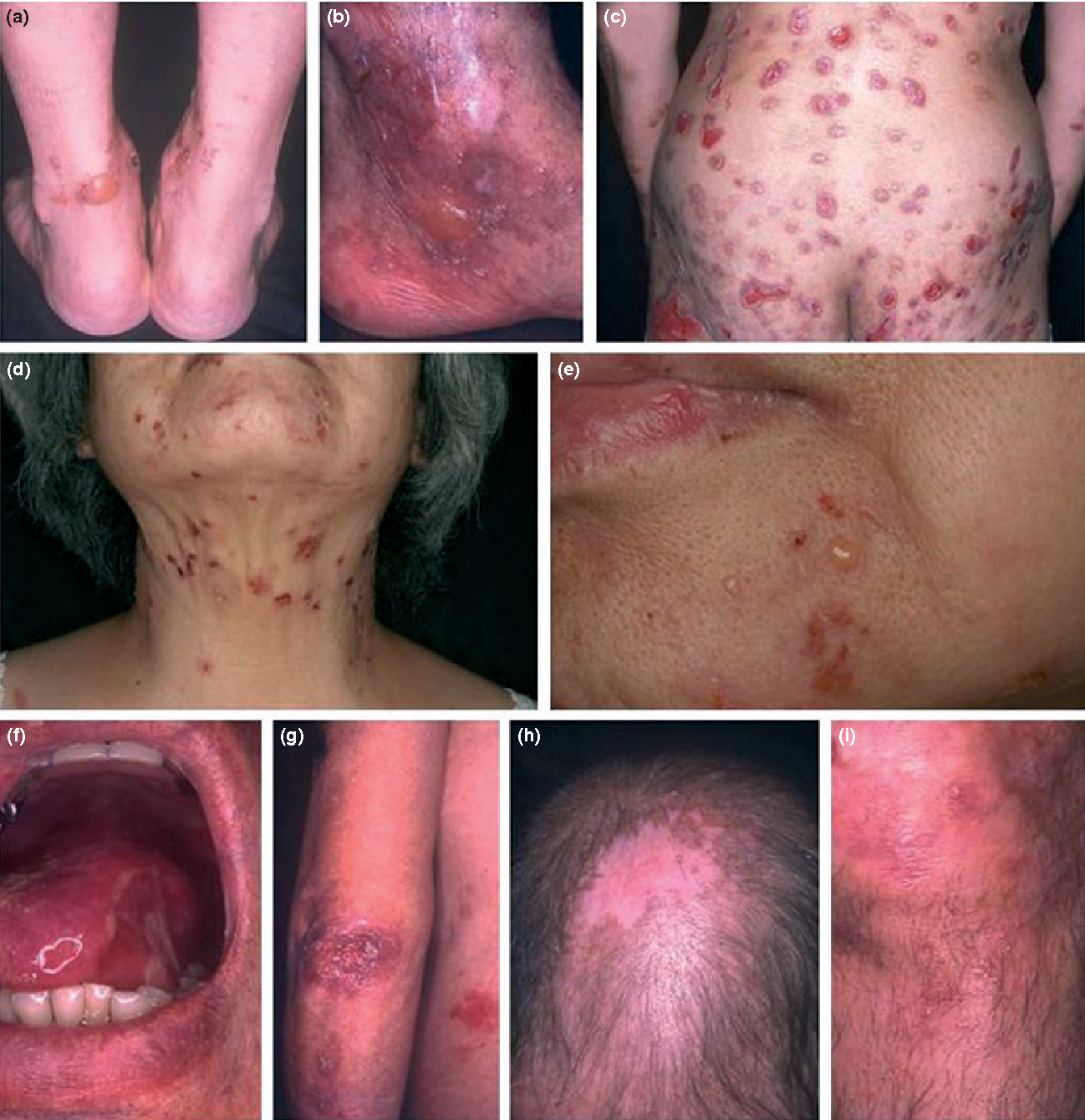
Kindler syndrome
- The rarest type.
- It is recessively inherited.
- Symptoms may include increased sensitivity to light; patchy/discoloured skin; and/or hardening of the skin on the palms of the hands and soles of the feet (hyperkeratosis).
- Sometimes the gums and teeth are affected as individuals get older.
Epidermolysis bullosa acquisita
The incidence of EB acquisita (EBA) is not well understood owing to it being the rarest type of EB.
- EBA is not inherited and is classified as an autoimmune disease, whereby the body attacks its own healthy tissue.
- It is thought that immune proteins mistakenly attack healthy collagen — the protein that binds the skin together. Symptoms are usually mild to moderate; blistering tends to mostly affect the hands, knees, knuckles, elbows and ankles.
The Pharmaceutical Journal, PJ, May 2021, Vol 306, No 7949;306(7949)::DOI:10.1211/
PJ.2021.1.80762

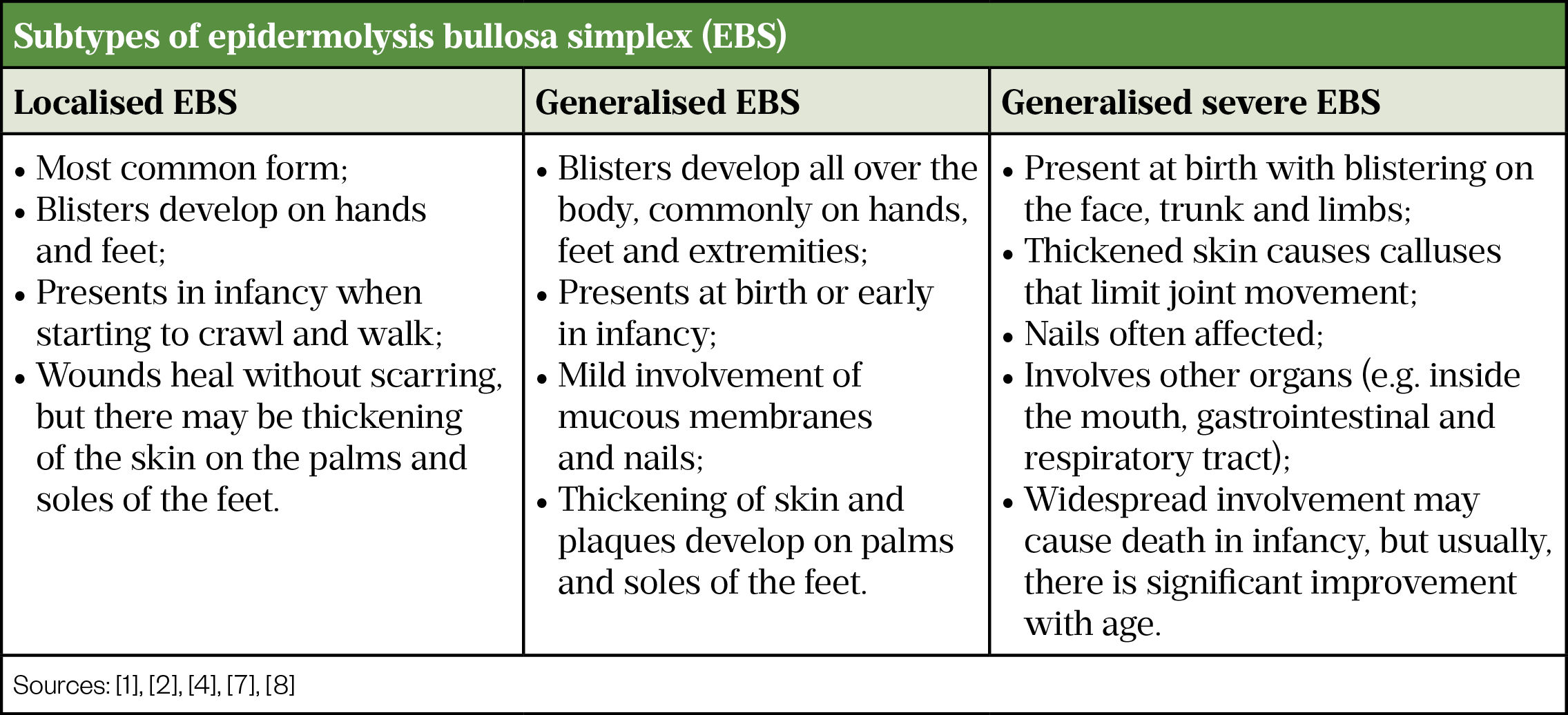
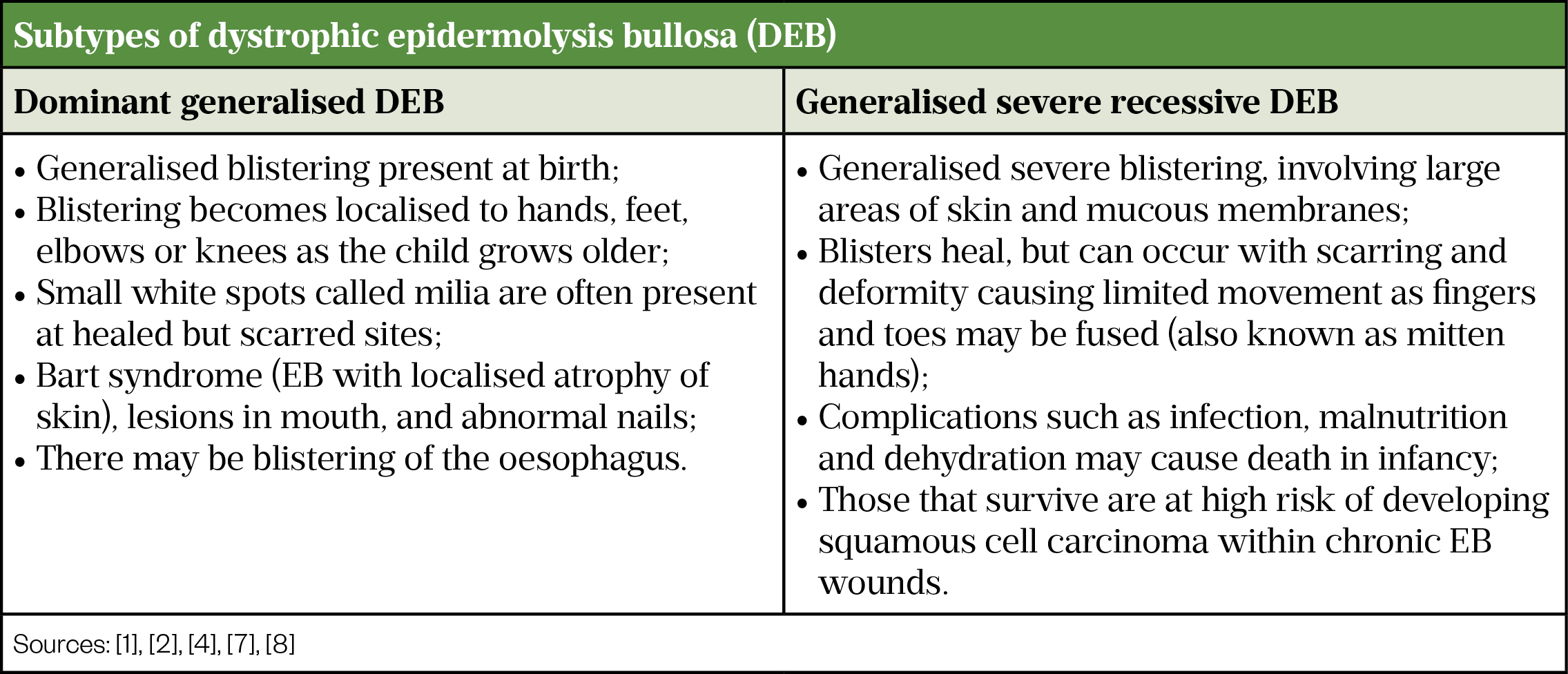 Table 2. Subtypes of dystrophic epidermolysis bullosa (DEB)
Table 2. Subtypes of dystrophic epidermolysis bullosa (DEB)